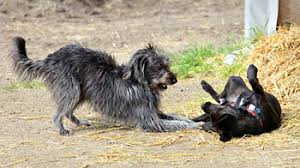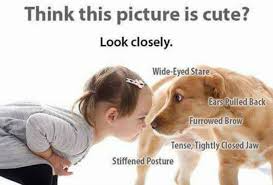Separation Anxiety in dogs
Adrian Kollnberger • Nov 04, 2020
Separation Anxiety in Dogs.

One of the greatest challenges for dog owners during 2020 is knowing what impact their dogs becoming familiar with them always being around is going to have when lockdown lifts and life gets back to normal Although a great opportunity to bond with your dog, spend time training, exercising and learning, how will the dog cope when you go back to work? If you recently got a puppy or rescue, they may never have been left alone.
It is important you set your dog up for success for when the lockdown ends. If not, you may find when normal routines return, they will not be psychologically prepared and have developed an over attachment to yourselves leading to the development of Separation Anxiety.
Separation anxiety is defined in humans as:
“An anxiety disorder in which an individual experiences; Excessive anxiety regarding separation from home and/or from people to whom the individual has a strong emotional attachment (e.g., a parent, caregiver, significant other or siblings)”
What Is It?
Separation anxiety is a broad term covering a range of behaviours which dogs display if they become anxious when separated from their owners. Dogs with separation anxiety commonly struggle with being left home alone. In more severe cases even being in a different room to their human family will result in signs of anxiety. Separation anxiety occurs when a dog that’s over reliant ton their owner gets stressed when left alone.
Scientific surveys suggest that more than 30% of UK pet dogs show obvious signs that they are anxious when home-alone. However, there are also more subtle ways that dogs may express their unhappiness. These signs include inability to settle, looking for their owner, and anxious body postures.
These less obvious signs are hard to spot so it is difficult to know the extent of your dog’s discomfort without videoing your dog home alone. Some experts suggest up to 80% of dogs could be suffering in silence.
Causes of Separation Anxiety
It is important to first understand what causes a dog to suffer from Separation anxiety. Common causes can be:
• Being left alone for the first time or when he/she is used to being with people.
• Change of ownership.
• Moving from a rescue to a new home.
• Change in family routine or schedule such as COVID and working from home.
• Loss of a family member.
Indicators of Separation Anxiety
A dog who suffers from Separation Anxiety can show extreme stress when left alone. He/she might:
• Howl, bark, or whine to excess
• Defecate or urinate even though they are toilet trained.
• Cause Damage such as chewing items, digging, scratching at doors, walls, or windows.
• Drool, pant, or salivate way more than usual and even vomit.
• Pace, often in an obsessive pattern or sit in one location (such as by the front door) for the whole duration of being left.
• Will not touch treats or toys that are left.
It is likely that these behaviours will not manifest themselves while the owner is around. Some of these behaviours are normal dog behaviours and may occasionally occur. In a dog with Separation anxiety these behaviours will occur practically every time when left.
Neuro-chemical and hormonal processes that occur with these emotions are not controlled by the mind. You cannot say to your dog “I’ll be back shortly” or tell them a time that you return to ease anxiety. Preparing time alone is key to preventing separation anxiety in young and rescue dogs.
How to Treat It
First, ask your Vet to do a thorough health check to rule out any medical problems. Sometimes dogs have accidents in the house because of infections or hormone problems or other health conditions. It also could be due to incomplete housebreaking. Some medications can also cause accidents. If your dog takes any drugs, ask your vet if they are to blame for any change in behaviour.
If the Problem Is Mild.
Have periods throughout the day when the dog is not with you – for example if you are working from home put the dog in another room whilst you are working then spend time with them when you have a break or a leg stretch. Give them some downtime away from and an opportunity to relax and chill out.
A technique called Counter conditioning can be used for mild cases. This technique turns a negative experience that the dog fears into something that becomes enjoyable. If your dog’s separation anxiety is not too serious, you may be able to try things like:
• Stuffed Kong –your dog could be entertained for hours with one of these hollow rubber toys filled with something tasty like peanut butter, cream cheese, or banana, or stuffed with wet dog food and frozen to make it last!
• Plenty of exercise – a good run helps to tire your dog before you leave them home alone, so they are more relaxed and likely to snooze through your absence.
• Brain games – mental exercise is also good for tiring dogs. Search games are a good way of tiring the dog physically and mentally.
Make leaving your dog and returning very boring without a lot of excitement. Ignore your dog for the first 10 minutes after you get home. If you are boring leaving and returning, this helps to reduce the anticipation of what is about to happen
Leave some recently worn clothes out that smell like you.
Leave the radio or TV on in another room tuned in to a talk channel.
Consider giving your pet over-the-counter natural calming supplements such as YuCALM made by Lintbells.
YuCALM works on the calming pathways in the brain to help reduce stress and support dogs towards feeling better.
If the Problem Is More Serious …
A dog with severe anxiety will not be distracted by even the tastiest treats and may even ignore them until you return home. You will need to slowly get him used to your absence.
Depending on the level of stress you may have to start restricting your dog from you even when you are in the room. Try putting a lead on the dog, hooking it under a sofa leg and sitting at the opposite end of the sofa for the evening. Wait for the dog to relax then try getting up and moving around.
He may start to get nervous when he sees sign that you are about to leave, like putting on your shoes or picking up your key or even turning the TV or lights off. So, do those things, but then do not leave. Put on your shoes and then sit down at the table. Pick up your keys and watch TV. Do this over and over many times a day randomly.
When your dog starts to feel less anxious about that, you can slowly start to disappear. First just go on the other side of the door, ask the dog to stay then close a door between you. Reappear after a few seconds. Slowly increase the amount of time you are gone. Put on your shoes and pick up your keys. Ask your dog to stay then go into another room.
As he gets more used to the "stay game," increase the amount of time you are gone. Then use an outside door, but not the same one you go out every day. Make sure your dog is relaxed before you leave.
Only you can tell if your dog is ready to be left alone for longer periods. Do not rush things. Give him a stuffed treat when you have built up to 10 seconds or so apart. Always act calm when you leave and when you return.
Gradually build up the time until you can leave the house for a few minutes. Then stay away for longer and longer periods.
For All Dogs
Make sure your pet gets lots of exercise every day. A tired, happy dog will be less stressed when you leave. It is also key that you challenge your pet's mind. Play training games and fetch. Use interactive puzzles. Work his mind as well as his body. That will keep him busy, happy, and too tired to be anxious while you are gone.
Contact Us
Thank you for contacting us.
We will get back to you as soon as possible.
We will get back to you as soon as possible.
Oops, there was an error sending your message.
Please try again later.
Please try again later.






